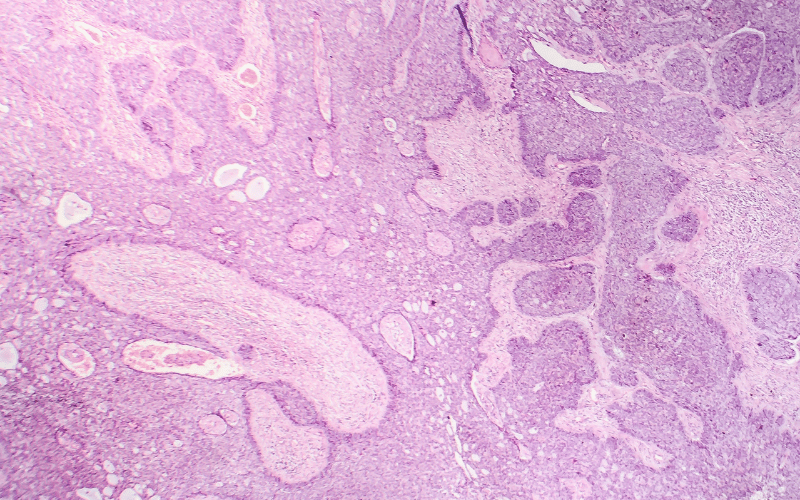3. Morpheaform Basal-Cell Carcinoma: The Stealthy Invader

Navigating through the world of basal-cell carcinomas, we encounter the morpheaform variant. This is a sneaky entity, characterized by its stealthy infiltration and scarce symptoms.
Often manifesting as a scar-like lesion without any preceding injury, morpheaform BCC subtly hints at its presence. However, its unassuming nature can lead to deceptive underestimations, making timely diagnosis a challenging task.
The morpheaform BCC marches to its beat. The lesions are waxy, resembling a scar or atrophic skin, making them easy to ignore or mistake for a healed wound. The borders are often ill-defined, giving it a blurred appearance. The skin overlying the lesion can sometimes be shiny, accompanied by visible tiny blood vessels. Unlike other types of BCC, these don’t often ulcerate, further contributing to the deception.
Despite its subtle surface manifestations, the morpheaform BCC is notorious for its deep tissue invasion. On the outside, the lesion might seem minimal, but underneath, its tentacles can spread extensively.
The scar-like appearance is a mere tip of the iceberg, often hiding aggressive subdermal spread. This characteristic makes it one of the more aggressive BCC subtypes, emphasizing the need for early detection and intervention.
Given its invasive nature, the treatment of morpheaform BCC demands an aggressive stance. Surgical excision remains the cornerstone, ensuring the removal of the entire lesion, including its deep-seated extensions.
Mohs surgery stands out as an excellent option, providing a systematic approach to ensure complete cancer removal while preserving as much healthy tissue as possible. In situations where surgery might not be feasible, radiation therapy offers an alternative, especially for older patients or those with lesions in challenging locations. This modality employs high-energy beams to target and kill the cancer cells, curtailing their growth. (3)